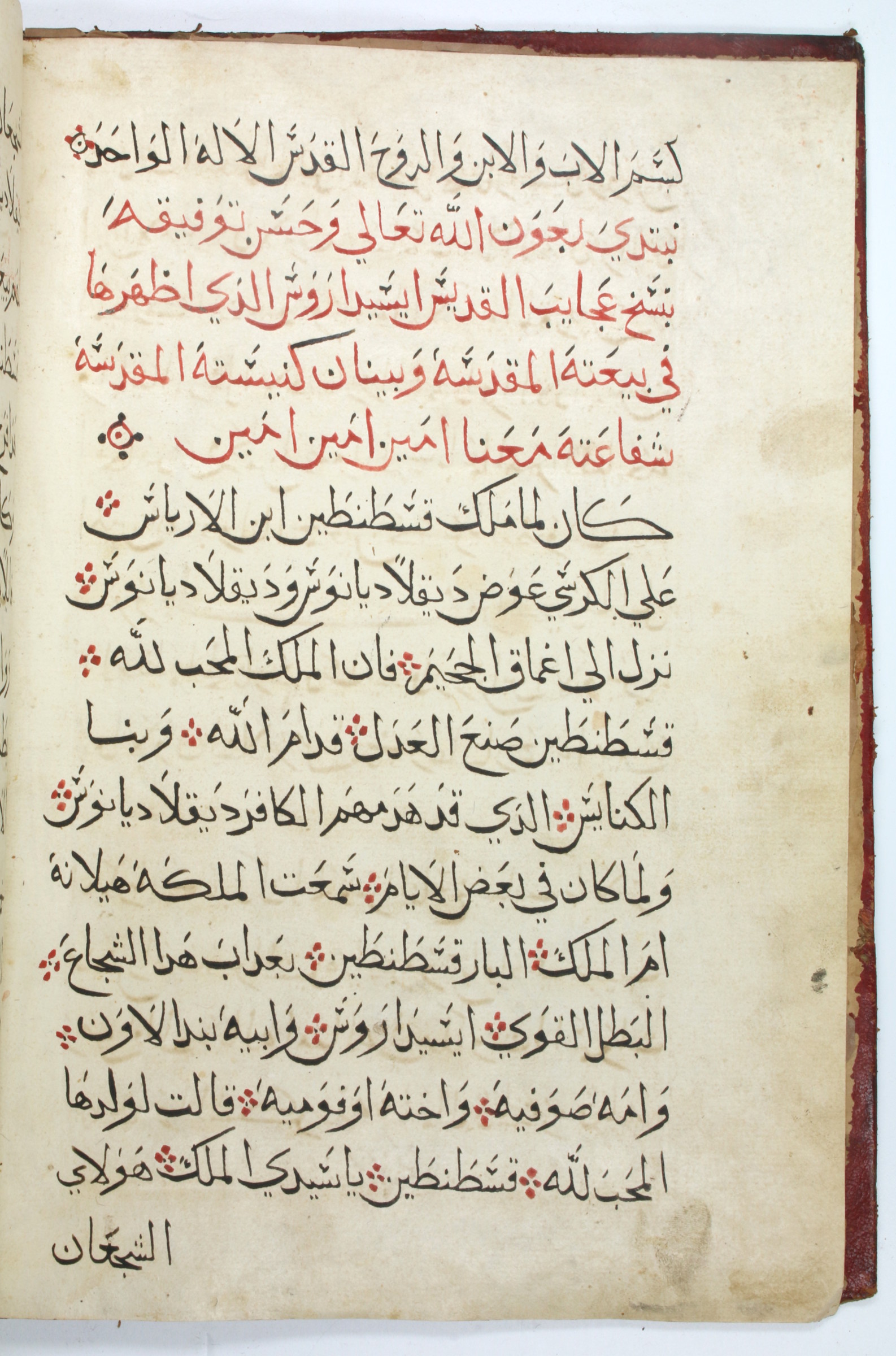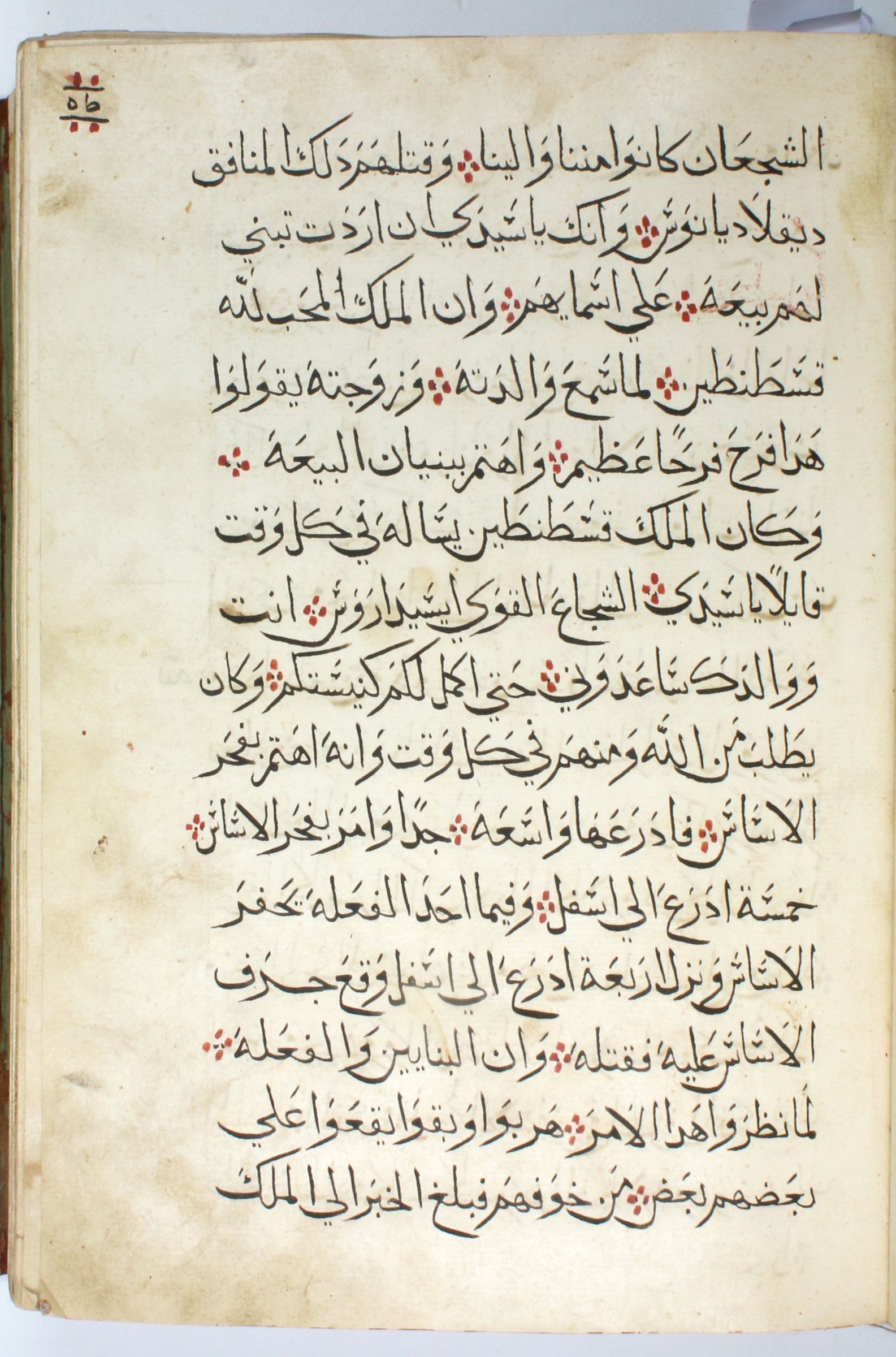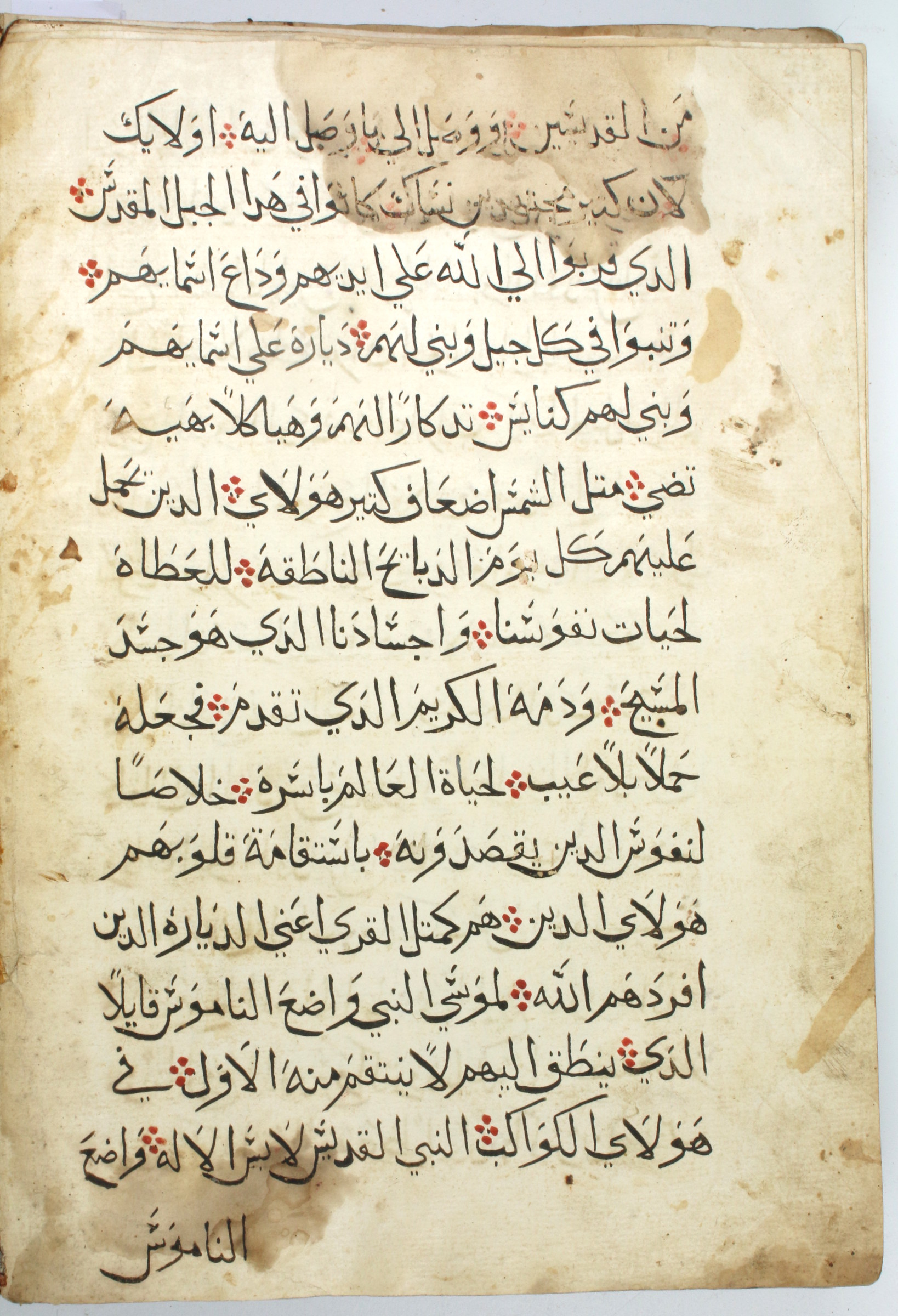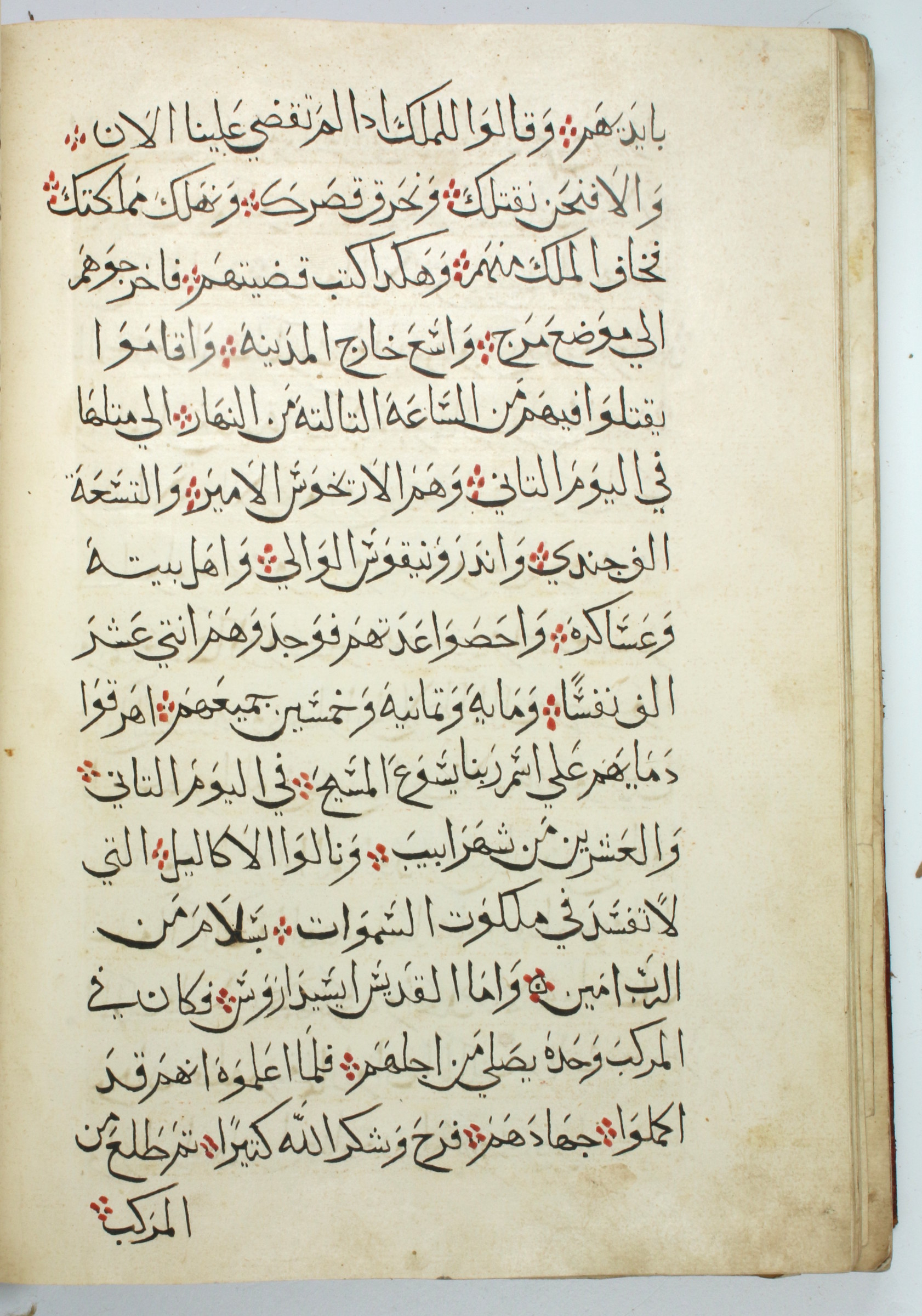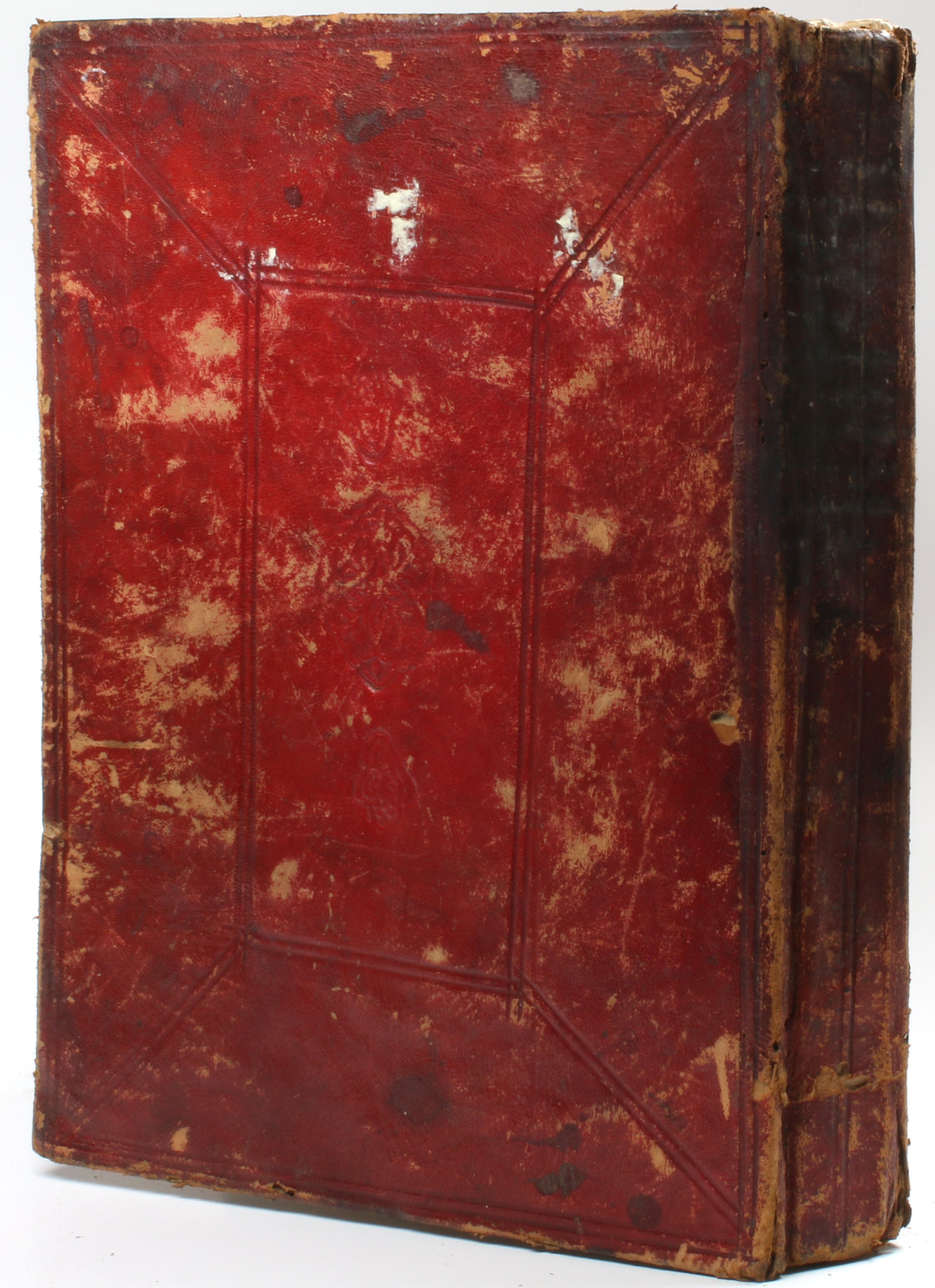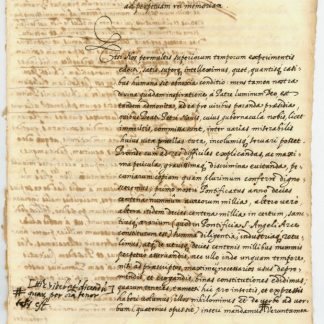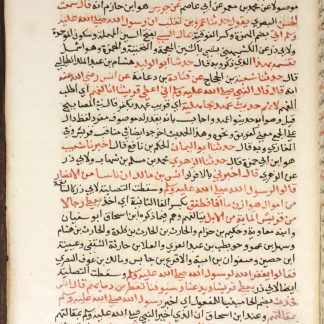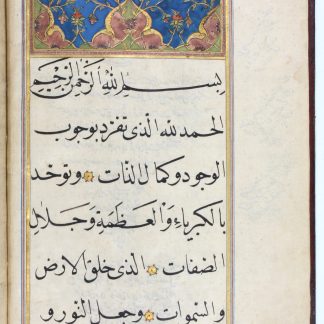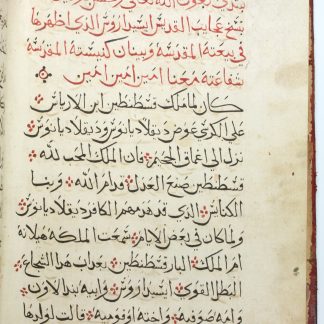Coptic hagiography of St Isidore written in Arabic
The Miracles of St. Isidore.
Folio (205 x 290 mm). (Verso of 77), 78-170, 303-306, 208, 183-188, 13 (but with correct catchword from fol. 188?)-18, 32-76, 201, 203-212, 30, 214-218, 172-178 ff. Arabic manuscript on paper. 18th century red morocco with flap, ruled in blind.
€ 65,000.00
An interesting Coptic hagiography of St. Isidore written in Arabic. This Mamluk Egyptian manuscript is from the golden age of Copto-Arabic literature, featuring the Miracles of St Isidore of Antioch, part of the Coptic Orthodox hagiography genre and a popular saint and martyr in the Coptic church. Copto-Arabic literature (Coptic Christian literature written in Arabic) got its start in the 10th century when Coptic bureaucrats began to keep administration records in Arabic. By the 14th century, Copto-Arabic literature was reaching its peak, and was no longer limited to dry bureaucracy but included practical and spiritual texts, such as this one.
The manuscript itself shows several hallmarks of its Coptic context: the black script is decorated in red in the Coptic manuscript style, and the enlarged chapter headings echo those found in Coptic manuscripts; additionally, its pages are numbered not in Arabic but in Coptic zimam numerals (also known as haruf al-zimam numerals), invented by 10th century Coptic bureaucrats seeking to replace Classical Coptic numerals with a more effective number system. Altogether a fascinating and early example of a particularly Coptic tradition of Arabic literature.
Exterior somewhat worn, binding a touch delicate. Misbound at some point in its history, with some text lacking as a result. Nevertheless, a striking manuscript in bold, attractive script.

